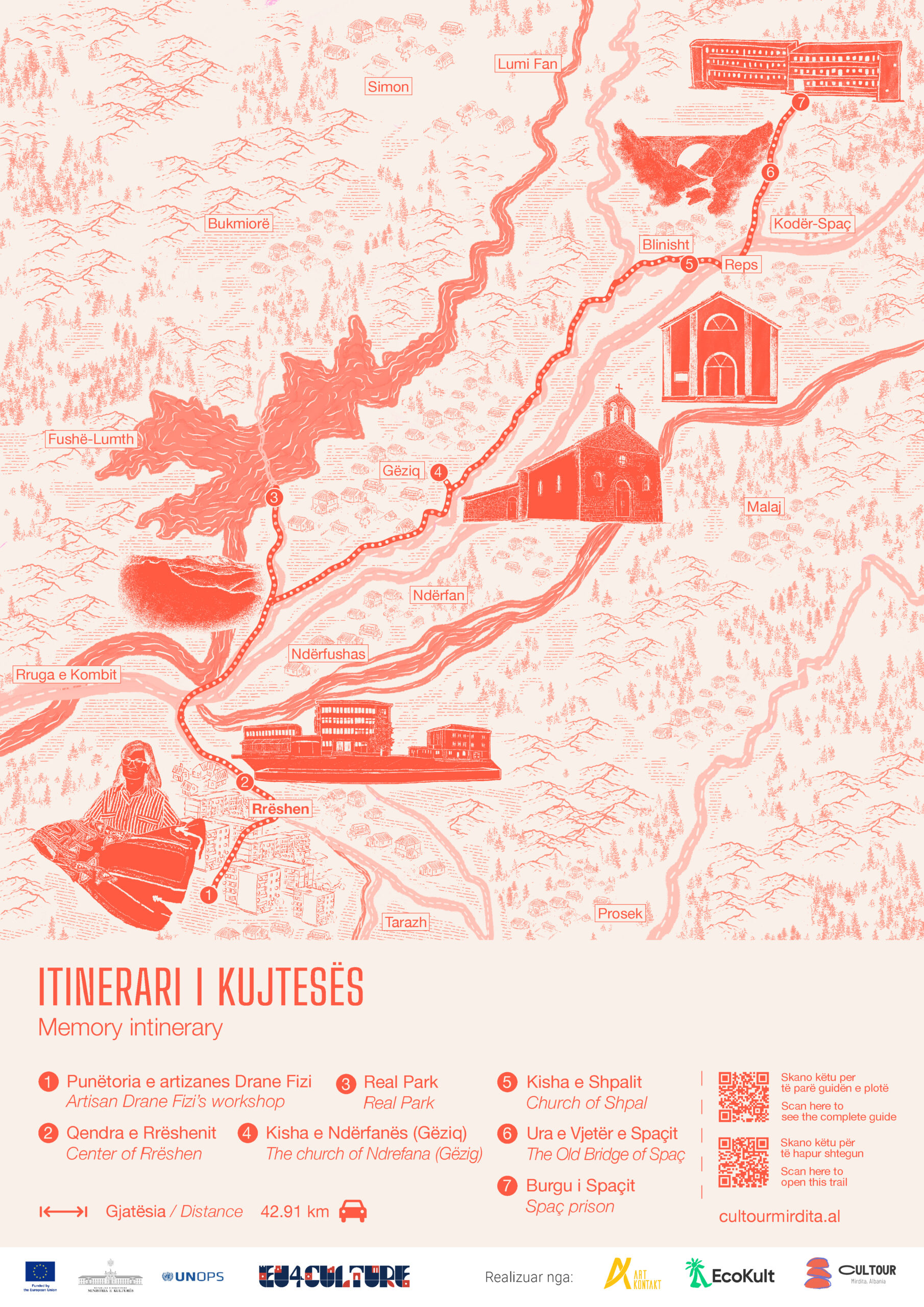The third route was designed by choosing places and stops that are not very frequented by visitors, but which occupy a special place in the historical memory of the Mirdita area and the whole country. They cover a large historical extent, from the monuments of the Arborian Middle Ages, to the socialist heritage of the late 20th century and to the still alive traditions of the characteristic crafts of the area. The route is divided into two parts, the first of which can be easily done on foot, while the second requires the use of a vehicle.

The third route again starts from the town of Rrëshen, but focuses on the traditional craftsmanship of the province. It begins with a visit to the atelier of Mrs. Drane Fizi, which produces and decorates characteristic clothes of the Mirdita area. Since she has dedicated her whole life to this craft, Mrs. Fizi is well acquainted with the local culture and tradition, and is considering the possibility of expanding her business with a shop. After the visit and the conversation with him, the road continues to the historical center of the city, "Abat Doçi" square and the Palace of Culture, where the artistic life of the province flourishes.
